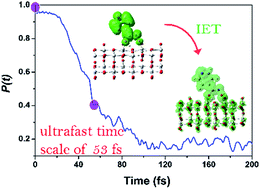Theoretical investigation of the adsorption, IR, and electron injection of hydroxamate anchor at the TiO2 anatase (1 0 1) surface†
Abstract
The adsorption of hydroxamate onto a TiO2 anatase surface has been theoretically determined. We find that the doubly deprotonated configuration is the optimal adsorption mode in terms of energetic and dynamical stability, which is demonstrated by vibrational spectrum analysis. This configuration can also undergo the ultrafast electron transfer event, with a time-scale of 53 fs.


 Please wait while we load your content...
Please wait while we load your content...